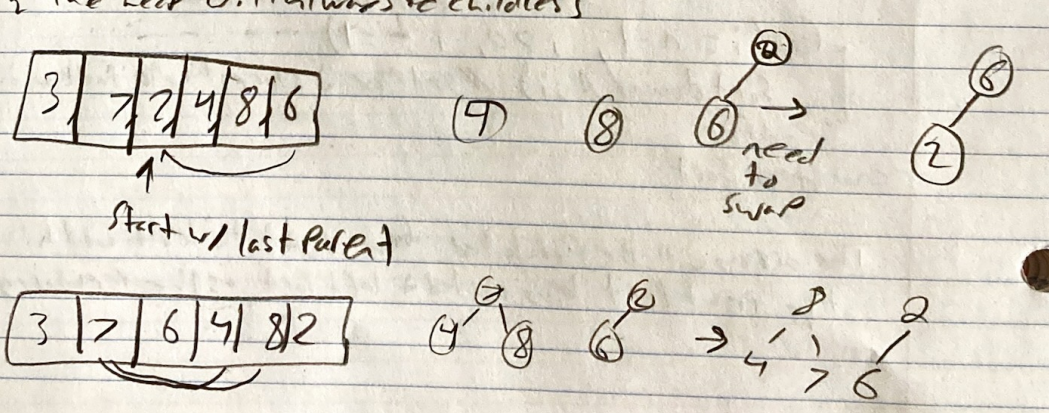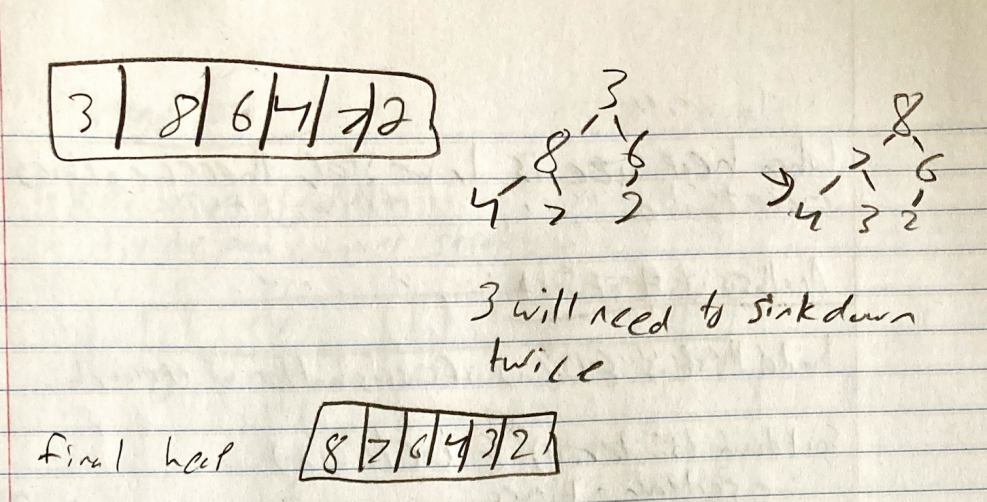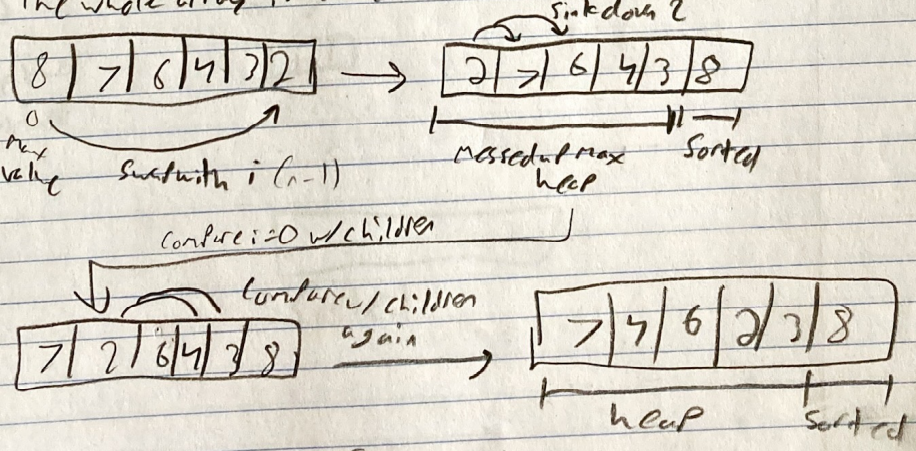#Sorting#Computer-Science#CS251 If we put n items into a max Heap, inserting all the items will take time, since each insertion is and we do n of them. We can make an array from the max’s of the heap made form the input array to sort it. GetMax is so repeating it n times for each item is
Heap Sort is an in place algorithm
We turn the input array into a max heap, then get the max and put it at the end. Repeating this until the heap is empty results in a sorted array.
Pseudocode
HeapSort(A: array of size n)
buildHeap(A) // Turns A into a binary heap. Max heap for ascending order, Min heap for descending order
for (i = n-1, i > 0, i -= 1)
sortdown(A, i) // getMax and store it into index i
endfor
end HeapSort
The array will be populated from right to left with the right part being sorted and left part as the remaining heap
buildHeap(A)
Transforms array A into a binary heap
There are two approaches for making the heap
Top down approach
We use
- left(i) = 2i +1
- right(i) = 2i+2
- parent(i) = to compare values in the heap and move them if needed.
We loop through the entire array, sinking/rising elements as needed until the array is in heap order.
These swaps will take time.
Bottom up approach
We start with the childless nodes and build up the heap will always be childless


Basically we start at the bottom and sink down each parent if needed
This is overall faster than top down approach. It ends up being
SortDown(A, i)
The whole array is a max heap at this point
 This process repeats for every index resulting in a sorted array
This process repeats for every index resulting in a sorted array
When heap size is 1, we stop, there’s nothing more to do.
Analysis of Heap Sort
buildHeap is if using bottom up appraoch
sortDown (one call of it) we sortdown n times -> We also can’t do better than so
In real life, heap sort isn’t great. The cache memory does not help, we jump back and forth between items often. OS’s don’t really like that. A better alternative is Merge Sort or Quick Sort